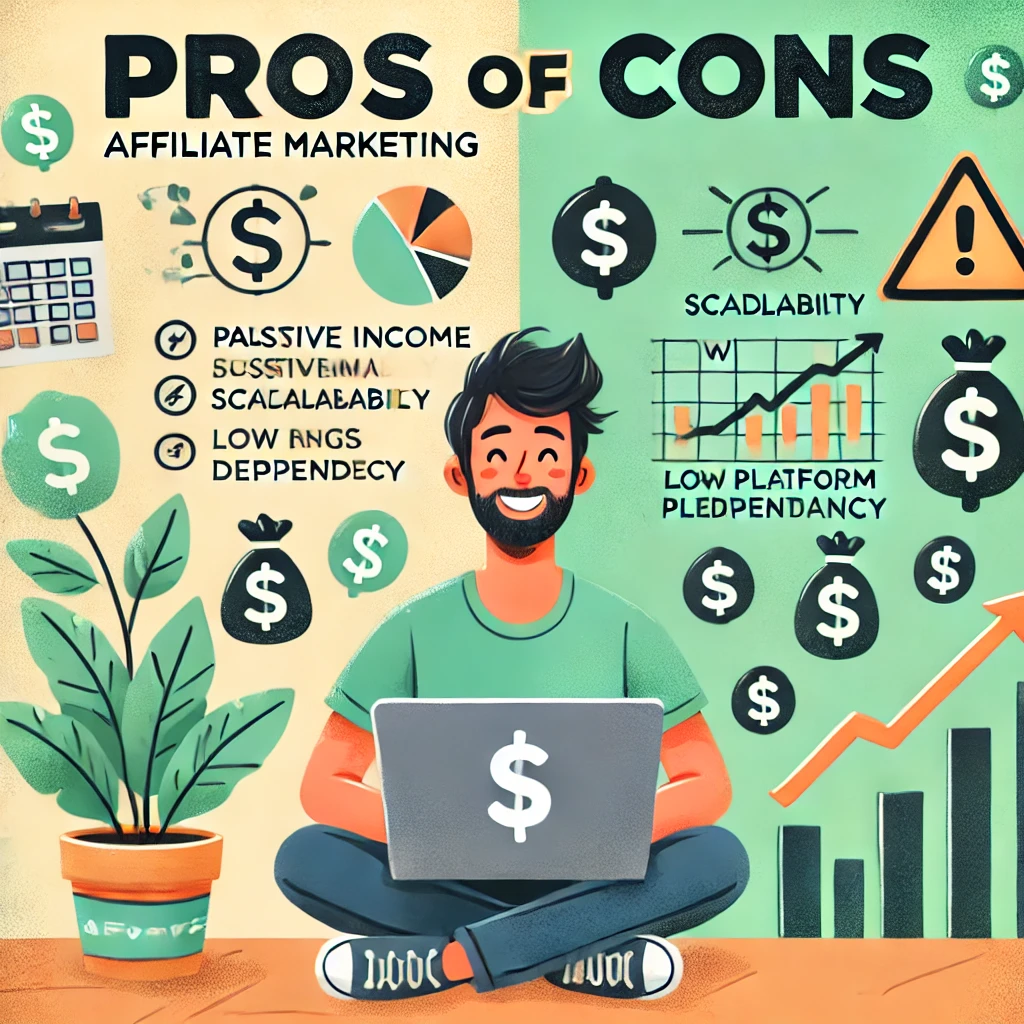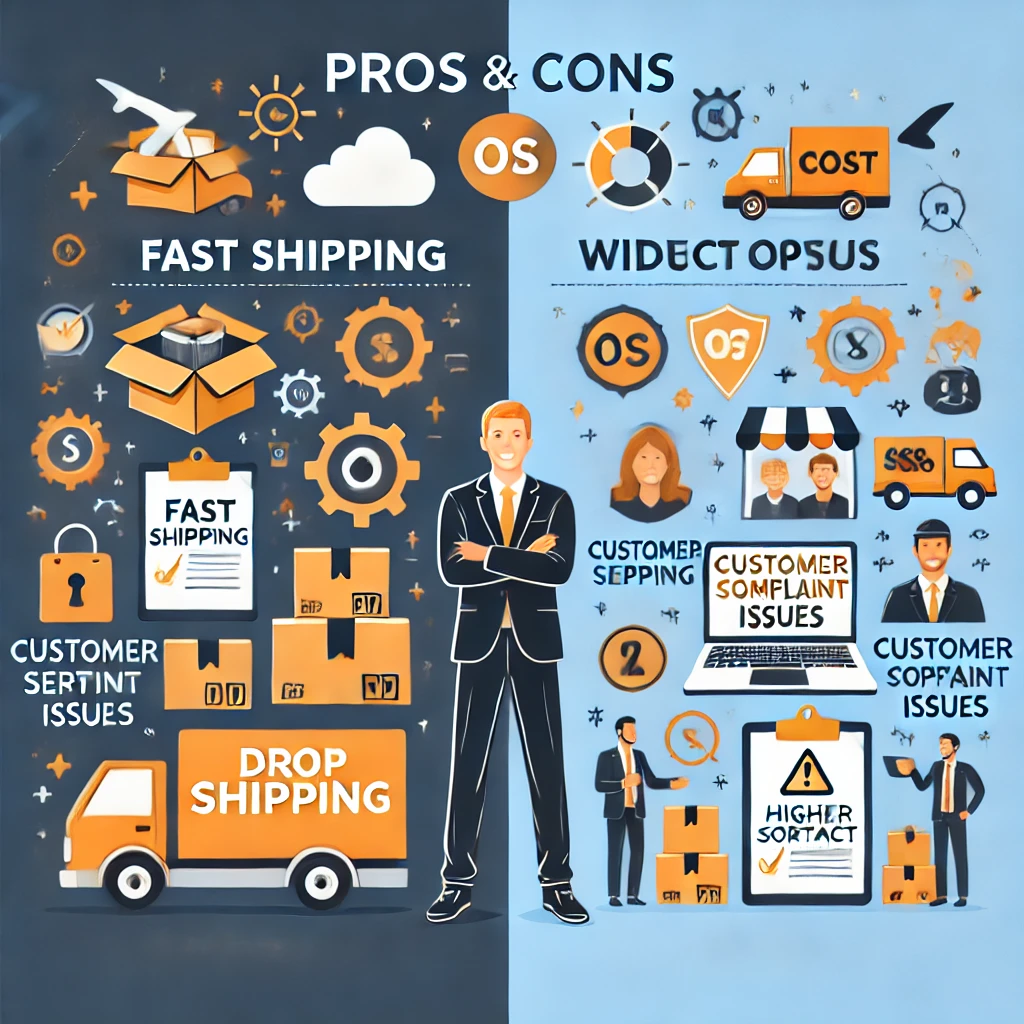Introduction

In the ever-evolving world of online business, two strategies often dominate conversations: affiliate marketing and dropshipping. Both offer opportunities to make money without the need for physical inventory, making them popular choices for digital entrepreneurs.
But how do you know which is right for you? Whether you’re a young professional exploring side hustles or a seasoned entrepreneur looking to diversify your income streams, this guide will help you understand the key differences, pros, and cons of each model.
Let’s dive in and uncover which path fits your goals best.
What Is Affiliate Marketing?

Affiliate marketing involves promoting someone else’s products or services through custom links. When someone makes a purchase through your link, you earn a commission.
How It Works:
- Sign up for an affiliate program (like Amazon Associates or ShareASale).
- Promote products through blogs, social media, or videos.
- Earn commissions when your audience makes purchases via your links.
Example Scenario:
Imagine you run a tech blog reviewing the latest gadgets. You recommend a pair of wireless earbuds and include an affiliate link in your review. Every time a reader buys those earbuds, you earn a percentage of the sale.
What Is Dropshipping?

Dropshipping involves running an online store where you sell products without keeping inventory. Instead, when someone places an order, the supplier handles product storage, packaging, and shipping directly to the customer.
How It Works:
- Set up an online store using platforms like Shopify.
- Select products from suppliers (like AliExpress or Oberlo).
- When a customer makes a purchase, the supplier ships the product directly to them.
Example Scenario:
You create a store selling trendy phone cases. When a customer buys a case, your supplier ships it directly to them. You earn the difference between what the customer pays and the supplier’s price.
Pros and Cons of Affiliate Marketing

Pros:
- Low Startup Costs: No need to invest in inventory or handle shipping.
- Scalability: Focus on content creation rather than logistics.
- Passive Income Potential: Create content once and earn commissions over time.
Cons:
- Lower Profit Margins: Commissions are often small compared to selling products directly.
- Less Control: You rely on third-party companies for product availability and pricing.
- Platform Dependency: Changes in affiliate program rules can impact your earnings.
Pros and Cons of Dropshipping

Pros:
- Greater Control: Set your prices and build your brand.
- No Inventory Hassles: Suppliers handle storage and shipping.
- Wide Product Selection: Sell virtually anything you can source from a supplier.
Cons:
- Higher Initial Costs: Store setup, marketing, and transaction fees.
- Customer Service Burden: You’re responsible for resolving customer issues.
- Quality Control Risks: Suppliers might ship defective products or delay delivery.
Which Model Is Right for You?

Ask Yourself These Questions:
- How much time and effort are you willing to invest upfront?
- Affiliate marketing is better for those who prefer creating content and earning passively over time.
- Dropshipping requires active involvement in managing orders and customer support.
- Do you enjoy customer service and problem-solving?
- If yes, dropshipping might be a good fit.
- If not, affiliate marketing spares you from these tasks.
- What’s your risk tolerance?
- Affiliate marketing is lower risk with minimal upfront investment.
- Dropshipping offers higher potential profits but comes with more financial risk.
Real-World Example Comparisons

- Affiliate Marketing:
A fitness influencer creates a blog reviewing workout gear and earns $5,000 per month through affiliate links by driving traffic via SEO. - Dropshipping:
An entrepreneur launches a Shopify store selling customized T-shirts and nets $8,000 monthly by investing in Facebook ads and managing orders full-time.
Visuals & Media Suggestions
- Comparison Infographic: Create a side-by-side chart showing the pros and cons of each model.
- Video Idea: A 5-minute explainer video comparing affiliate marketing and dropshipping, highlighting key differences visually.
- Customer Stories: Testimonials from people who succeeded in either business model.
Conclusion

Both affiliate marketing and dropshipping offer fantastic opportunities to earn money online. The best choice depends on your goals, available time, and willingness to take on certain responsibilities.
If you prefer passive income with minimal risk, affiliate marketing may be your best bet. If you enjoy building a brand and managing sales directly, dropshipping might be more your style.
Why choose just one? Many entrepreneurs find success by combining both models to diversify their income streams.
Audience Engagement Ideas:
- Poll: “Which model do you think is better for your business goals? Affiliate Marketing or Dropshipping?”
- Call to Action: “Share your thoughts below! Have you tried either model? What was your experience like?”
- Quiz Idea: “Take our quiz to find out which online business model fits your personality!”
Special Writing Style Notes:
- Tone: Friendly, conversational, and informative.
- Language: Simple, clear, and jargon-free.
- Storytelling: Use relatable examples and scenarios to make the content engaging.








